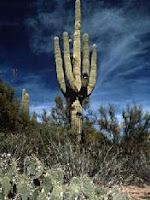Pictures of Angiosperms

Pictures of Angiosperms Trumpet Creeper The trumpet creeper, characterized by small clusters of trumpet-shaped flowers, is a woody-stemmed root climber that prefers sunny, fertile, moist, well-drained soils. It reaches 7 to 12 m (22 to 40 ft) in size. Trumpet Vine Characterized by small clusters of trumpet-shaped flowers that bloom in the summer, the climbing vine known as the trumpet vine or trumpet creeper is often grown for its ornamental value. The trumpet vine prefers sunny weather and fertile, moist, well-drained soils. The vine spreads rapidly and reaches 7 to 12 m (22 to 40 ft) in size under proper conditions. On wooden buildings, the unchecked vine can cause damage by loosening shingles. Varieties of Tea The three kinds of beverage tea, Camellia sinensis, differ in the way they are processed. The leaves of black tea, made by every tea-growing nation, are partially dried and their juices squeezed from them before they are fermented and dried. The leaves that make green tea are...



